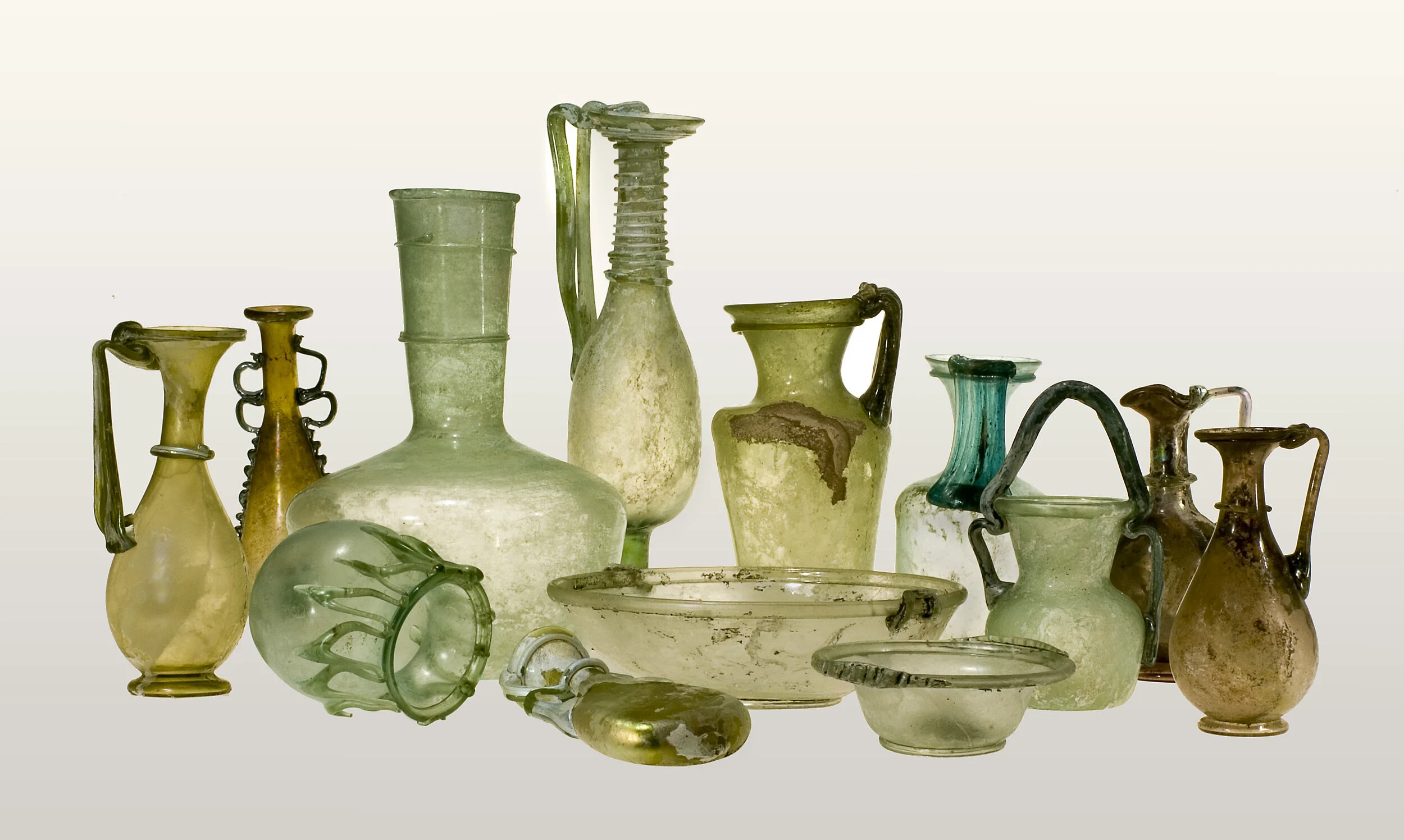The Saul A. Fox Center for Ancient Glass is responsible for treating all glass finds from Israel Antiquities Authority excavations.
Finds include bowls, glasses, wine glasses, bottles of different shapes, jars, beakers, cosmetics vessels, lamps, beads, bracelets, necklaces, amulets, pendants and more. Carefully recorded and photographed on site, the excavated vessels undergo preliminary sorting in order to determine the importance of each fragment or vessel and the need for further treatment. Glass finds are then sent to the laboratories still covered with layers of sand, mud and patina. They will be cleaned and restored, and later drawn, photographed and catalogued. No treatment of glass objects is given outside the laboratories, mainly due to the fragility of the objects, and to the importance of the layers of patina which are studied by experts prior to its cleaning.
The origins of glass making, and the early stages of its development, began in the ancient Near East, in the Royal courts of Mesopotamia and Egypt. Some 2,000 years ago, in the Roman period, the invention of glassblowing in the eastern Mediterranean, perhaps Israel or at some point along the Phoenician coast, brought about a revolution in glassmaking. The characteristic transparency, delicacy, and subtle colors, as well as many of the forms - wineglasses, bottles, juglets and jars - that were introduced in the Roman period are still the trademarks of glassware today.
Archaeological excavations began in the eastern Mediterranean in the nineteenth century. Excavations in Israel have uncovered assemblages of glass which enable regional and chronological classification of types and forms: date and distribution, as well as patterns of trade and fashion can now be fixed with greater accuracy. Glass vessels help date archaeological strata and remains, as their typological changes over the years provide a chronological yardstick in a manner similar to that of pottery vessels and lamps.
The Ancient Glass Department of the Israel Antiquities Authority is the only one of its kind in the world. No other similar organization with responsibilities for archaeological excavations, and all matters of archaeology in the country, includes such a department, in charge of all issues relating to ancient glass finds in Israel, including ancient glass technology and production methods. The glass vessels, as well as the smaller glass fragments found during excavations, help to date the archaeological strata, and architectural remains. Glass types change over the years and can be grouped chronologically in the way that ceramic vessels and oils lamps are dated. The staff of the Ancient Glass Department provides expertise to archaeologists from Israel and from around the world, studies and publishes the glass finds, and advises on all issues relating to ancient glass in the collections of the Israel Antiquities Authority.
The Ancient Glass Housing Center in the National Campus for the Archaeology of Israel is designed to house all ancient glass finds that were excavated and will be excavated in the future, after the completion of their laboratory treatment and scientific research. The current collection of ancient glass contains more than 9,000 complete objects, and thousands of indicative fragments. The housing center is designed to be an active, growing facility, able to hold 20,000 glass vessels in optimal environment conditions, providing long shelf life for the objects, and easy access for students, researchers and archaeologists, as well as the general public, to view, study and research the collection. The objects are arranged chronologically, from the Late Bronze period to the Muslim periods, as well as regionally - North, Center, South and Jerusalem.
One of the unique and fascinating features of the Saul A. Fox National Center for Ancient Glass in the Jay and Jeanie Schottenstein National Campus will be the rare opportunity for the public to visit objects in the visible housing, as well as to observe the archaeological work performed in the conservation and restoration laboratories. This remarkable feature is an important and dramatic example of the IAA's mission to provide increasingly enhanced accessibility to its huge collections.


